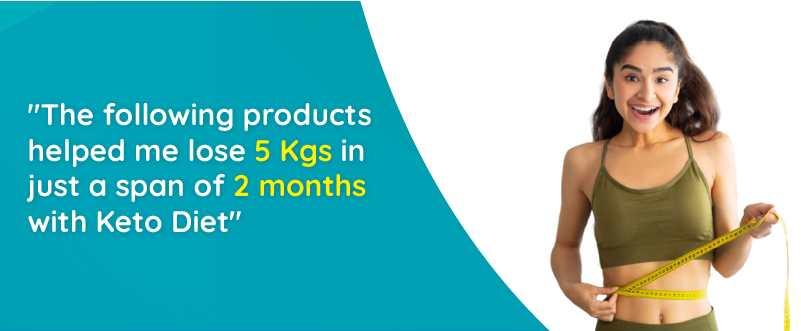
How Much Protein Should You Eat on Keto?
Are you following a Keto diet but are losing muscle mass? Chances are, your protein ratio is all wrong! Your body requires proteins to build and maintain muscles. Too little protein may cause you to lose muscle mass. Read on to see how much protein you need when you’re having keto foods.
What is a Keto Diet?
The basic principle of a Keto diet is cutting down on carbs and increasing healthy fat intake so that your body enters a state of ketosis. At this stage, your body utilizes its own fat, thus causing you to lose weight.
What happens if you eat too little protein on a Keto Diet?
Proteins are necessary for building muscles. Without a daily dose of proteins, you will lose lean tissue mass. Your body cannot retain your muscles and you'll end up becoming weak. Hence, it is important to eat a sufficient amount of protein every day, especially when you’re relying on keto foods.
How much protein should you eat on Keto?
It is recommended to eat at least 20% of your calories or about 1.2-2.0 g of protein per kg of body weight when following a Keto diet. This optimal range allows your body to sustain ketosis and maintain your lean tissue mass.
How much protein is too much protein on a Keto diet?
Proteins consist of smaller units of amino acids. On digestion, proteins are broken down into these subunits and then absorbed by your body. When you go overboard on your daily protein intake, your body converts these amino acids into glucose by a process called gluconeogenesis. This will force your body out of ketosis to burn glucose instead.
Signs you are eating too many proteins on a Keto diet
- Your breath smells like ammonia
When proteins are broken down, ammonia and urea are produced. Excessive ammonia and urea react with saliva in your mouth. This makes your breath smell. This symptom is a sure sign that you need to reign in your protein intake!
- You feel nauseous
Although mild nausea is a common symptom of the Keto diet, extensive nausea with persisting digestive issues is a sign your body is coming out of ketosis. In such a case, you need to start consuming lesser proteins.
- Diarrhoea
Another significant indicator of eating too much protein is diarrhoea. Your body is thrown out of ketosis, which is upsetting your metabolism. Your body is unable to decide whether to burn fats or glucose. In such a state, you will experience diarrhoea and other digestive issues.
- Irritability and headache
Another indicator that your Keto diet is going wrong is feeling an emotional imbalance and a headache. You may feel more aggressive and exhausted. At this stage, to maintain Ketosis you must reduce your protein intake.
The bottom line
When following a Keto Diet, don’t forget your daily dose of proteins! Eating too little or too much of it can affect your diet and throw you out of ketosis. To achieve the best results, eat at least 60-120g of proteins every day, depending on your body weight. Maintain a healthy lifestyle, exercise more often, and make an easy-to-follow routine. Or you can just get customized keto meals by subscribing to Keto meal plan delivery by Lo! Foods, specially crafted by nutritionists.
References:
This Blog post is an initiative by Lo Foods, to provide accurate and Nutritionist / Doctor approved information related to Health. Lo Foods is India's leading brand for Everyday Functional Foods. Foods designed for specific Health conditions or Needs. Lo Foods also runs India's largest range of Low Carb Healthy Cloud Kitchens, under the brand names of Lo!, ProteinChef, ATH (All Things Healthy) and DiabeSmart.

















Leave a comment
Your email address will not be published.